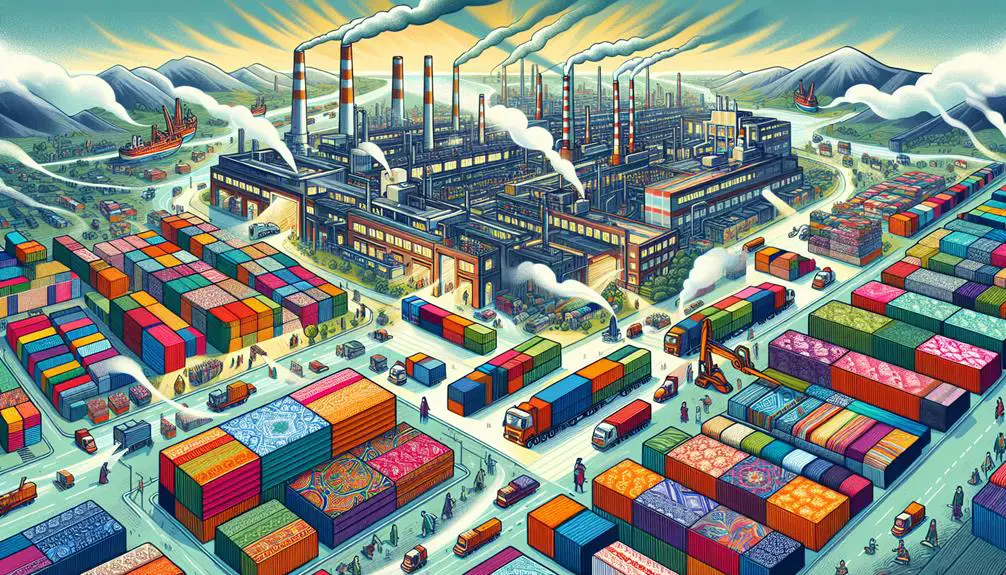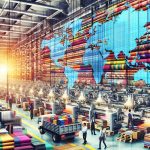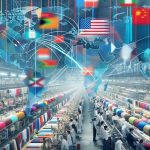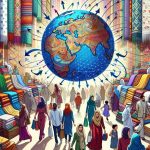You might not realize that trade policies can drastically alter the landscape of the textile industry, affecting everything from pricing to availability. When tariffs are imposed, domestic producers gain a buffer against international competition, but you'll likely see higher prices for textiles. Quotas, by limiting imports, can also lead to fewer choices for consumers and elevated costs. Trade agreements, meanwhile, aim to lower barriers and enhance market access, encouraging innovation and growth. How do these elements interplay to shape the industry's future? Let's explore how each policy impacts employment, innovation, and sustainability in textiles.
Table of Contents
Key Takeaways
- Tariffs protect domestic textile industries but lead to higher prices for imported fabrics and goods.
- Quotas limit textile imports, aiding local manufacturers but resulting in higher prices and fewer choices for consumers.
- Trade agreements lower tariffs and barriers, enhancing global competitiveness and supply chain efficiency for textile companies.
- Tariffs and quotas can stifle market competitiveness by inflating prices and reducing consumer demand.
- Sustainable trade policies promote eco-friendly practices, reducing environmental impact and aligning with global environmental goals.
Tariffs and Their Impact
Although tariffs aim to protect domestic industries, they often lead to higher prices for textiles.
When you impose tariffs on imported textiles, the immediate effect is an increase in the cost of these goods. This cost implication is twofold: it raises the price of imported fabrics and allows domestic producers to hike their prices without facing competition from cheaper foreign goods.
By understanding these dynamics, you can see how tariffs can markedly affect market competitiveness. Domestic manufacturers might enjoy a temporary advantage, but the inflated prices can deter consumers and reduce overall demand.
You're likely to notice that, in the long run, even local producers may struggle as they become less efficient without the pressure to compete with international suppliers.
To master the intricacies of tariffs, consider how they disrupt the delicate balance of supply and demand. Higher prices can lead consumers to seek alternatives, sometimes even turning to smuggled goods or black-market options. This unintended consequence diminishes the very protection tariffs are supposed to provide.
Quotas in Textile Trade
Quotas in textile trade limit the volume of textiles that can be imported, directly impacting market availability and pricing. By capping imports, quotas create a controlled environment where domestic producers face less pressure from foreign competitors. This regulation can be a double-edged sword.
On one hand, you'll see local manufacturers thriving due to reduced competition. On the other hand, consumers may face higher prices and limited choices.
Understanding the market implications of these quotas is vital. They can lead to imbalances where certain textiles become scarce, driving up prices. Global competition doesn't cease; it merely shifts focus. Countries with production limitations might find themselves unable to meet domestic demand, relying heavily on imports within the quota limits.
In the textile industry, quotas also restrict growth potential. Manufacturers may hesitate to expand production capabilities if they can't export surplus goods freely. This creates a ripple effect: reduced innovation, limited product variety, and potential stagnation in industry standards.
You must grasp these dynamics to navigate the complex landscape of textile trade effectively. With quotas shaping the market, strategic planning becomes essential to maintaining competitiveness and ensuring sustainability within the industry.
Trade Agreements and Access
Understanding how trade agreements shape market access is key to maneuvering through the complexities of the textile industry. You need to recognize that these agreements dictate how easily your products can enter the global market. By lowering tariffs and removing barriers, trade agreements can greatly reduce costs and increase your competitive edge. They also streamline the supply chain, making it more efficient to source raw materials and distribute finished goods.
For instance, agreements like NAFTA and the EU's trade agreements have opened up vast markets for textile companies. When you leverage these opportunities, you can scale your operations and tap into new customer bases. However, it's essential to stay informed about the specific terms and conditions of each agreement. Not all agreements are created equal, and understanding the nuances will help you maximize benefits while minimizing risks.
Additionally, trade agreements often include rules of origin, which determine whether your products qualify for preferential treatment. Navigating through these rules can be intricate, but mastering them ensures that you fully capitalize on reduced tariffs and simplified customs procedures.
Employment and Innovation
Employment and innovation in the textile industry are closely linked, driving both job creation and technological advancements. When you explore this dynamic sector, you'll see how new technologies not only streamline production but also create new employment opportunities. By adopting cutting-edge machinery and automation, companies can boost efficiency, reducing costs and allowing for higher wages and better working conditions.
Innovation spurs job creation in several ways. First, as firms invest in research and development (R&D), they need skilled workers to design, implement, and maintain new technologies. This demand creates jobs in both technical and managerial roles.
Second, the integration of technological advancements such as AI and IoT in manufacturing processes requires a workforce adept at handling these new tools, fostering a culture of continuous learning and skill enhancement.
Moreover, as businesses push for innovation, they often collaborate with educational institutions, creating internships and training programs that prepare the next generation for the industry. This not only addresses current employment needs but also secures a steady pipeline of talent for future growth.
Sustainability in Textiles
As the textile industry evolves, focusing on sustainability becomes essential to mitigate environmental impacts and ensure long-term viability. By prioritizing eco-friendly practices, you can significantly decrease waste and conserve resources.
Embracing sustainable methods not only benefits the planet but also enhances brand reputation and meets consumer expectations for responsible production.
To achieve sustainability in textiles, consider these key areas:
- Circular Economy: Implementing a circular economy model guarantees that textiles are designed for reuse, recycling, and minimal waste. By extending the life cycle of products, you can reduce the need for raw materials and lessen environmental strain.
- Green Manufacturing: Adopting green manufacturing processes involves using renewable energy sources, reducing emissions, and minimizing water usage. This approach not only cuts operational costs but also reduces your carbon footprint, making your production more eco-friendly.
- Sustainable Sourcing: Sourcing materials from sustainable suppliers ensures that the raw inputs are produced with minimal environmental impact. Opt for organic fibers, recycled materials, and suppliers committed to ethical practices to align your production with sustainability goals.
Frequently Asked Questions
How Do Currency Exchange Rates Affect the Textile Trade Industry?
Imagine a seesaw: when currency exchange rates fluctuate, they can tip the balance of the textile trade industry. You'll find export regulations, supply chains, tariffs, and market trends all shifting in response to these changes.
What Role Do Consumer Preferences Play in Textile Trade Policies?
You influence textile trade policies through your consumer behavior and market trends. Preferences for sustainable materials or specific designs drive policy adjustments, ensuring the market aligns with your demands and evolving trends.
How Does Intellectual Property Law Impact Textile Design and Manufacturing?
You'll discover that intellectual property law greatly shapes textile design and manufacturing by safeguarding against copyright infringement and securing design protection. This legal landscape lets creators confidently craft and commercialize unique and innovative textiles.
What Are the Effects of E-Commerce on the Global Textile Market?
E-commerce revolutionizes the global textile market by streamlining the supply chain, increasing market competition, and enabling instant access to diverse products. You'll need to adapt quickly to leverage these changes for maximum growth and profitability.
How Do Geopolitical Tensions Influence Textile Trade Routes and Partnerships?
Imagine it's the Wild West out there. Geopolitical tensions disrupt global supply chains, making strategic alliances vital. Tariff implications lead to market volatility, forcing you to navigate unstable waters and rethink textile trade routes and partnerships strategically.
- Tetron Fabric for Marine Applications: Durability and Use Cases - June 18, 2025
- Tetron Fabric for Outdoor Furniture: Weather Resistance and Care - June 18, 2025
- Tetron Fabric for Wall Coverings: Style and Application Tips - June 18, 2025







